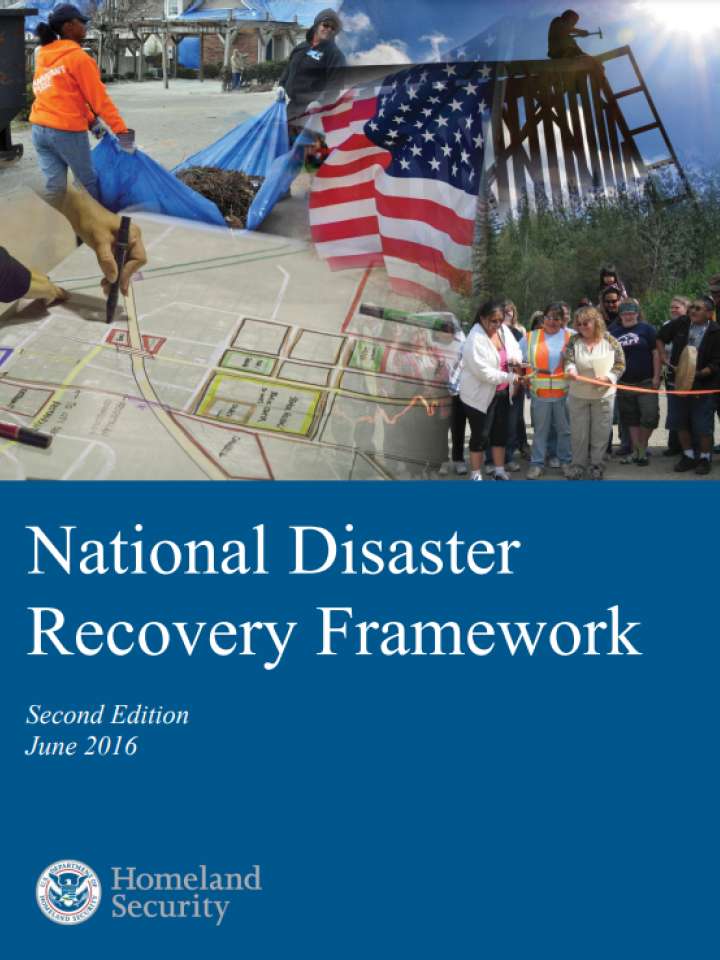USA: National disaster recovery framework
The National Disaster Recovery Framework (NDRF) establishes a common platform and forum for how the whole community builds, sustains, and coordinates delivery of recovery capabilities. Resilient and sustainable recovery encompasses more than the restoration of a community’s physical structures to pre-disaster conditions. Through effective coordination of partners and resources, we can ensure the continuity of services and support to meet the needs of affected community members who have experienced the hardships of financial, emotional, and/or physical impacts of devastating disasters.
The primary value of the NDRF is its emphasis on preparing for recovery in advance of disaster. The ability of a community to accelerate the recovery process begins with its efforts in pre-disaster preparedness, including coordinating with whole community partners, mitigating risks, incorporating continuity planning, identifying resources, and developing capacity to effectively manage the recovery process, and through collaborative and inclusive planning processes. Collaboration across the whole community provides an opportunity to integrate mitigation, resilience, and sustainability into the community’s short- and long-term recovery goals.
The NDRF is guided by eight principles that when put into practice, maximize the opportunity for achieving recovery success. The guiding principles remind us of the importance of how we work together to support survivor needs and build resilience:
- Individual and family empowerment;
- Leadership and local primacy;
- Pre-disaster recovery planning;
- Engaged partnerships and inclusiveness;
- Unity of effort;
- Timeliness and flexibility;
- Resilience and sustainability; and
- Psychological and emotional recovery.
Explore further
